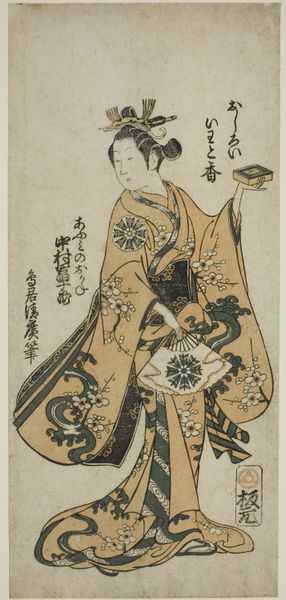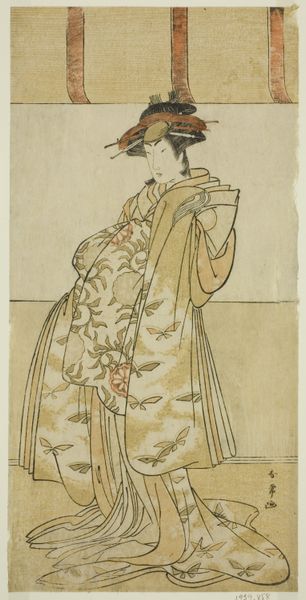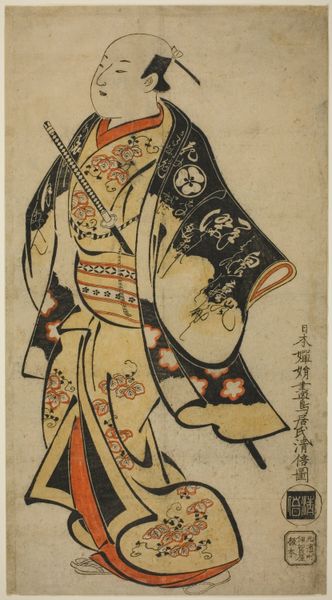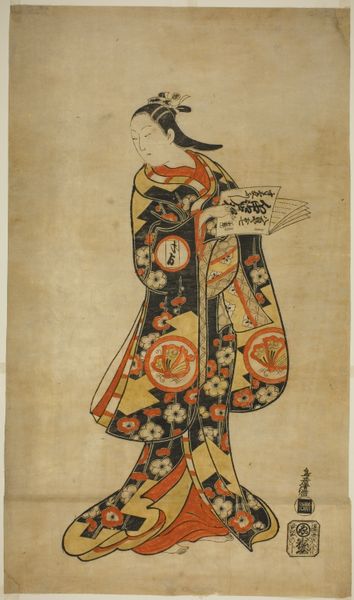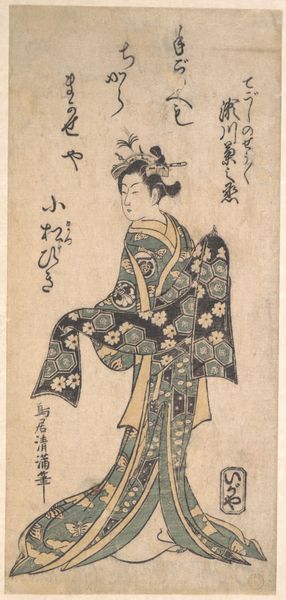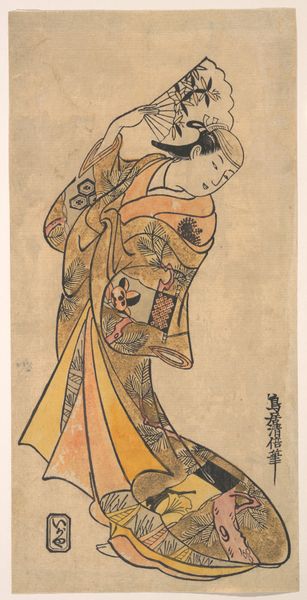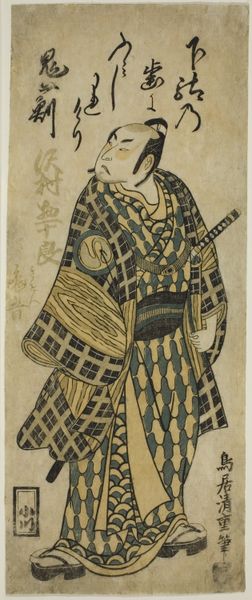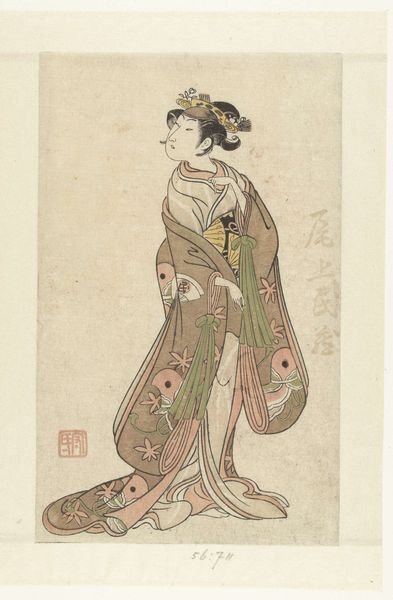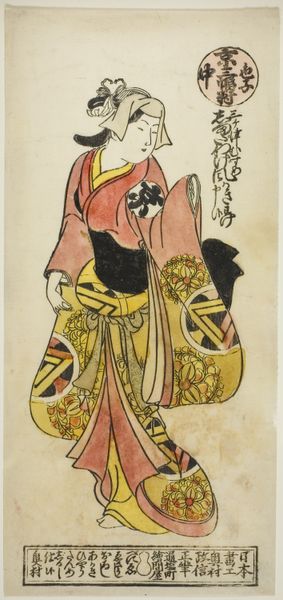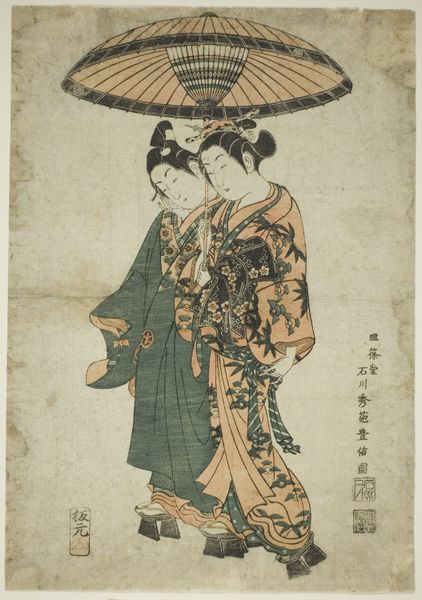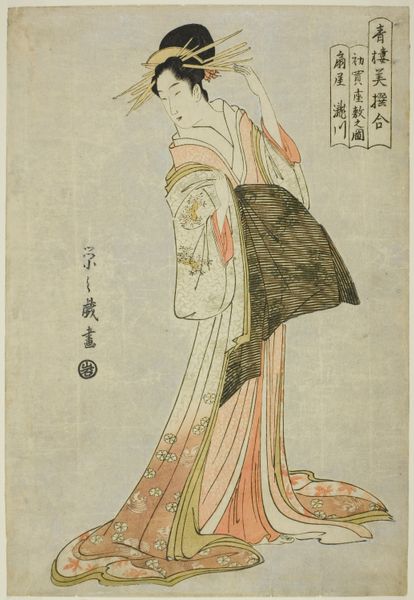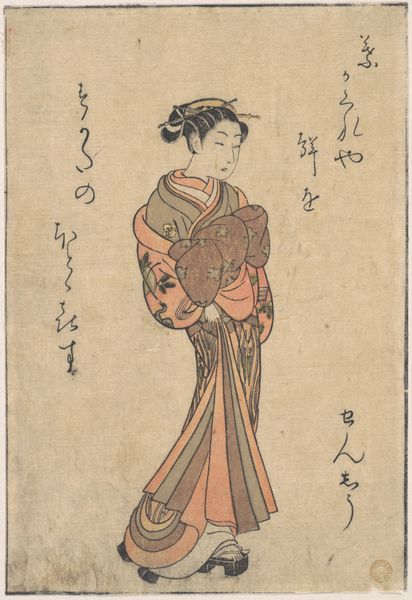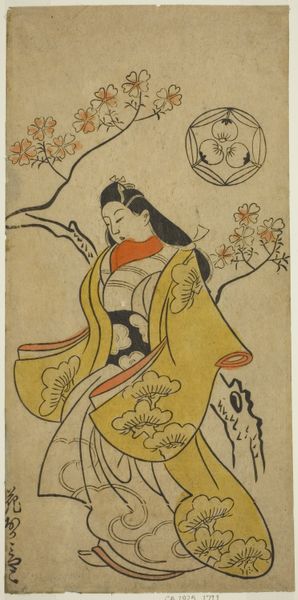
Oshichi Carrying a Blossoming Cherry Branch c. 1727 - 1730
0:00
0:00
print, woodblock-print
#
portrait
# print
#
asian-art
#
ukiyo-e
#
figuration
#
woodblock-print
#
history-painting
Dimensions: 32.7 × 15.8 cm (13 × 6 1/8 in.)
Copyright: Public Domain
Curator: At first glance, I am drawn to the quiet sorrow emanating from this portrait; it’s striking how the artist captures the feeling of wistful resignation through subtle details like the downcast gaze and the weight of the robe. Editor: Let’s contextualize what we're observing. This is "Oshichi Carrying a Blossoming Cherry Branch," a woodblock print by Okumura Toshinobu dating from around 1727 to 1730. The work, now at the Art Institute of Chicago, illustrates a young woman associated with a tragic tale. Curator: Woodblock, interesting. That means each color, each line, demanded meticulous carving and registration. Look at the pattern on her kimono. Is it cherry blossoms or plum blossoms? The density is amazing, giving substance to the fabric. The flat perspective draws attention to the two-dimensionality, a dialogue between image and object. Editor: What resonates with me is the narrative. Oshichi was a greengrocer's daughter who, to be with her lover, committed arson, believing she wouldn't be executed as a minor. But because a similar crime had not been committed for many years, they executed her as an example. Curator: So, this isn't merely an image of beauty; it’s charged with societal implications. What was Toshinobu trying to express about women and the judicial system in this woodblock? The print process allows mass production and dissemination of potent narratives and social messages. Editor: It also makes you consider what a story this reveals about class divisions and the role of women in Edo-period Japan. The story transformed Oshichi from a commoner to a tragic heroine of popular culture. Even in her shoes you find flower patterns. I can imagine artisans meticulously carving and layering inks onto the block. Curator: The stark color palette helps amplify that solemn mood. There is something almost spiritual to the character, which combined with the delicate blossoming cherry branch, alludes to fleeting beauty and transient existence. That connection creates an uneasy visual balance. Editor: Yes, it makes the narrative more touching. Thinking of the conditions, these images were commodities for a rising merchant class with newfound income and desire for culture; that this was for mass consumption affects my response to the imagery itself. Thank you for expanding how I think about Oshichi, and how that makes me feel about woodblock printing in 18th-century Japan. Curator: The pleasure is mine, it's striking to uncover social context within these formal components, like the scale and color which reveals much about consumption patterns and working people during the Edo-period.
Comments
No comments
Be the first to comment and join the conversation on the ultimate creative platform.
